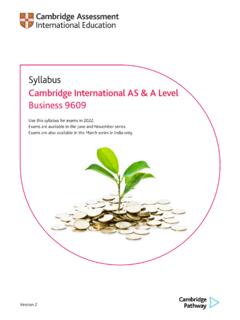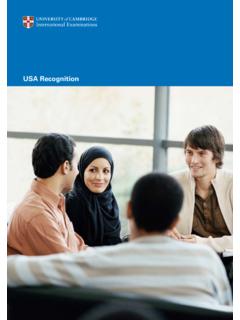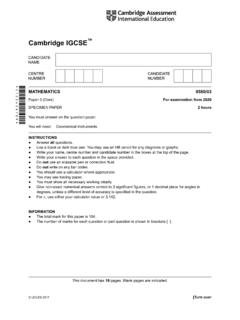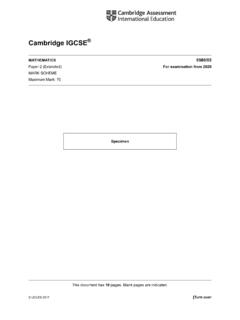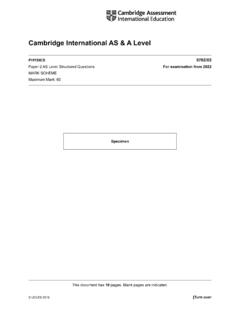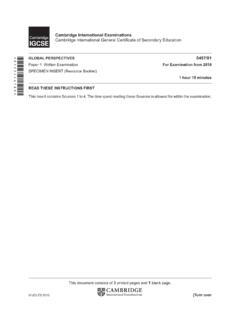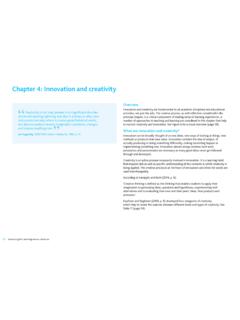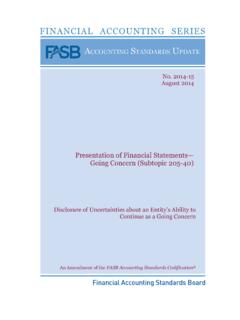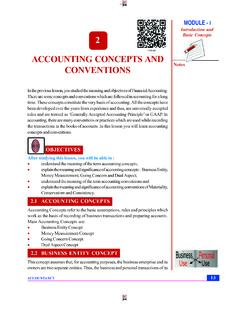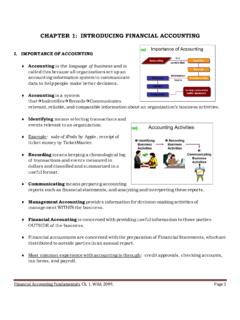Transcription of INTERNATIONAL ACCOUNTING STANDARDS
1 Version 1 Teacher Guidance for 9706 ACCOUNTING on INTERNATIONAL ACCOUNTING STANDARDS Cambridge INTERNATIONAL AS & A Level ACCOUNTING 9706 For examination from 2023 In order to help us develop the highest quality resources, we are undertaking a continuous programme of review; not only to measure the success of our resources but also to highlight areas for improvement and to identify new development needs. We invite you to complete our survey by visiting the website below. Your comments on the quality and relevance of our resources are very important to us.
2 Would you like to become a Cambridge INTERNATIONAL consultant and help us develop support materials? Please follow the link below to register your interest. Copyright UCLES 2020 Cambridge Assessment INTERNATIONAL Education is part of the Cambridge Assessment Group. Cambridge Assessment is the brand name of the University of Cambridge Local Examinations Syndicate (UCLES), which itself is a department of the University of Cambridge. UCLES retains the copyright on all its publications. Registered Centres are permitted to copy material from this booklet for their own internal use.
3 However, we cannot give permission to Centres to photocopy any material that is acknowledged to a third party, even for internal use within a Centre. Contents Introduction .. 4 IAS 1: Presentation of financial statements .. 6 IAS 2: Inventories .. 12 IAS 7: Statement of cash flows .. 16 IAS 8: ACCOUNTING policies, changes in ACCOUNTING estimates and errors .. 19 IAS 10: Events after the reporting period .. 21 IAS 16: Property, plant and equipment .. 23 IAS 36: Impairment of assets .. 28 IAS 37: Provisions, contingent liabilities and contingent assets.
4 31 IAS 38: Intangible assets .. 33 Appendix 1: Statement of changes in equity .. 36 Appendix 2: Financial statements for other forms of business (AS Level) .. 37 Appendix 3: Financial statements for other forms of business (A Level) .. 42 Appendix 4: Resources for photocopying .. 45 INTERNATIONAL ACCOUNTING STANDARDS 4 Introduction This document is designed to help teachers in their delivery of INTERNATIONAL ACCOUNTING STANDARDS (IAS) to learners of Cambridge INTERNATIONAL AS & A Level ACCOUNTING . Its aims are: to give a definitive indication of areas learners will need to be aware of in relation to the IAS for future Cambridge INTERNATIONAL A Level ACCOUNTING examinations to provide illustrative examples for learners and teachers.
5 The guidance presented in this document is primarily aimed at teachers. Only those STANDARDS identified in the Cambridge INTERNATIONAL AS & A Level ACCOUNTING syllabus will be considered, as listed in the following table. INTERNATIONAL ACCOUNTING STANDARDS Candidates will be required to have a basic knowledge of the following STANDARDS and how these STANDARDS relate to topics in the syllabus. IAS Topic IAS 1 Presentation of financial statements IAS 2 Inventories IAS 7 Statement of cash flows IAS 8 ACCOUNTING policies, changes in ACCOUNTING estimates and errors IAS 10 Events after the reporting period IAS 16 Property, plant and equipment IAS 36 Impairment of assets IAS 37 Provisions, contingent liabilities and contingent assets IAS 38 Intangible assets Use of this document The model financial statements in this document are given to help you and your learners apply the relevant STANDARDS .
6 At the appropriate level, to a course of study. They are provided for illustrative and informative purposes only. Every effort has been made to make sure that the document is complete in terms of the relevant requirements of INTERNATIONAL Financial Reporting STANDARDS (IFRS) and IAS. However, as the STANDARDS are constantly changing, you should review professional documents as they become available in order to maintain current working knowledge of the STANDARDS . Int ernational ACCOUNTING STANDARDS 5 Users of financial statements Financial statements are used by a variety of groups for a variety of reasons.
7 The framework surrounding IAS identifies the typical user groups of ACCOUNTING statements. The table below identifies the user groups (stakeholders) and gives likely reasons for the user groups to refer to financial statements. Main users Reasons for use Owners to assess efficiency of the stewardship of management to assess performance in relation to payment of dividend Managers to assess efficiency of their strategies by comparing with previous years or with similar businesses Investors to assess past performance as a basis for future investment Employees to assess performance as a basis of future wage and salary negotiations to assess performance as a basis for continuity of employment and job security Lenders to assess
8 Performance in relation to the security of their loan to the business to assess the performance in relation to payment of the interest (finance cost) on the loan provided Suppliers to assess performance in relation to receiving payment of their liability Customers to assess performance in relation to the likelihood of continuity of trading Government to assess performance in relation to compliance with regulations and assessment of taxation liabilities Public and environmental bodies to assess performance in relation to ethical trading Qualitative characteristics As shown above, financial statements are prepared for a variety of reasons.
9 The Conceptual Framework for Financial Reporting developed by the INTERNATIONAL ACCOUNTING STANDARDS Board (IASB) sets out the qualitative characteristics of the financial statements that makes them useful to the users: Fundamental qualitative characteristics Relevance the information influences the economic decisions of users. Faithful representation the information must be complete, neutral and free from errors. Enhancing qualitative characteristics Comparability the information enables comparisons with similar information about other entities and with similar information about the same entity over time to identify and evaluate trends.
10 Verifiability the information is faithfully represented and can be verified, providing assurance to the user that it is both credible and reliable. Timeliness the information is provided to the users within a timescale suitable for their decision-making purposes. Understandability the information is readily understandable by users, which is facilitated through appropriate classification, characterisation and presentation of information. INTERNATIONAL ACCOUNTING STANDARDS 6 IAS 1: Presentation of financial statements IAS 1 was comprehensively revised and reissued in September 2007 and applies to ACCOUNTING periods beginning on or after 1 January 2009.
